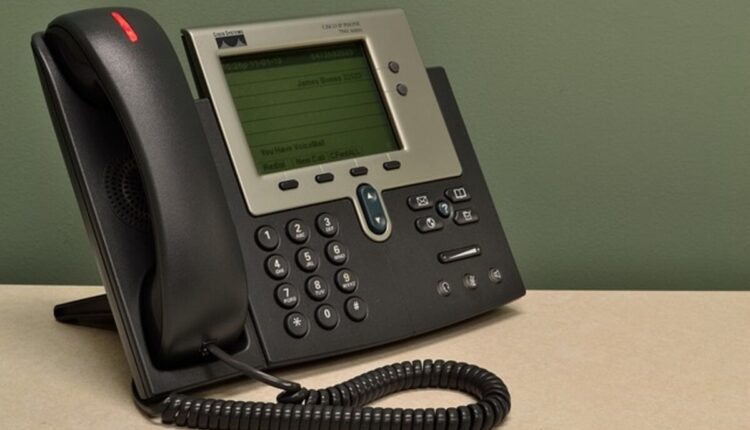The Art of Leaving Powerful Voicemails
Salespeople have a tough time dealing with prospects who don’t get back to them following a presentation. I’m confident that you already have some of these in the works. You’ve just finished a 45-minute presentation, during which you fielded a few questions, pitched a transaction, and were assured that it would be shown to whoever was interested. Then you start calling and emailing them constantly, but they never respond. Where do you go from here?
It would be best if you had a systematic strategy, starting with making an appointment with your prospect before you hang up the phone after your demo or presentation. I know what you’re thinking: “But they didn’t know when they would get an answer from the decision maker, so she just told me I could follow up in a week – or two weeks, etc.” Here’s why it doesn’t make a difference:
At the end of each interaction with a prospect, you must either set up a date to follow up with them or gain their approval for a day and time to do so. If they don’t know the answer immediately, that’s okay; just set up a time and date to follow up with them. Ensure you have their preferred meeting time and date on your calendar, and encourage them to do the same.
You may start your re-engagement with the following voicemail campaign once you’ve set up this appointment (and don’t worry; I know there is probably a 50/50 probability of them remembering or being ready for you; that’s fine). If you contact them at the scheduled time and they don’t answer, you can increase the likelihood that they’ll call you back by following this planned voicemail process.
If they don’t pick up when you call to provide the demo or presentation itself, leave the following message on their voicemail:
Hello, my name is ___________, and I work for (insert company name here). I wanted to remind you about the (marketing solution/lead gen – whatever you sell) demo scheduled for 2 o’clock today. After receiving this message, please get back to me as soon as possible; I realize you may be on the phone or wrapping up a meeting.
My phone number is (Reveal number carefully). I’ll avoid picking up the phone for several minutes if you need to contact me. I hope to hear from you soon, so here’s my direct number again: (ease out).
If they don’t pick up after your demonstration, leave this message on their voicemail:
Hello, my name is ___________, and I work for (insert company name here). Please let me know if (Corporate/Regional Manager, boss, etc.) have any questions about the plan I emailed you on [insert date here] before our meeting at 2 o’clock today.
After receiving this message, please get back to me as soon as possible; I realize you may be on the phone or wrapping up a meeting. My phone number is (Reveal number carefully). I’ll avoid picking up the phone for several minutes if you need to contact me. I hope to hear from you soon, so here’s my direct number again: (ease out).
If you haven’t heard back from a potential client after two days, try leaving the following message on their voicemail:
The Third Voicemail Message: The Follow-Up to the Follow-Up
Hello, my name is ___________, and I work for (insert company name here). I know you have a lot on your plate, but I wanted to follow up on the proposal I sent you (date mailed).
Please get back to me so we can schedule a time to talk, _______, even if you haven’t heard back from (Corp/Manager/boss) yet.
My phone number is (Reveal number carefully). Please leave a message if you receive my voicemail; I’ll be available throughout the day. I hope to hear from you soon, so here’s my direct number again: (ease out).
If you don’t hear back within a week after leaving these messages, you should write the “Should I Stay or Should I Go?” email (by the way, you should also follow up each of the voicemails above with an email that is very similar to your voice mails). This is something I’ve discussed before, but I’ll mention it here for your reference:
You’re undoubtedly already humming along to the chorus of “Should I Stay or Should I Go?” by The Clash, which contains the song’s title line. The email’s main content is as follows:
“_________ There are three possible explanations for my lack of a response from you:
If you’ve decided to go with a different firm, please let me know so I can stop bugging you, 1)
Two) You’re still thinking about it but haven’t had a chance to respond.
You’ve fallen and can’t get up? Tell me when you need help, and I’ll contact 911.
I need to know which one it is to stop worrying about it. I appreciate your time and attention and am eagerly awaiting your reply.
When did you last smile? It’s not surprising that this gets a positive reaction. What makes it work is that it makes people happy and provides them with an exit strategy. It’s better to know this upfront rather than waste time chasing and pleading with someone who does not intend to move forward with you.
Those who are still considering responding to your email to express their continued interest.
Making sure everything is set up correctly (always arrange an appointment for follow-up), using a systematic and integrated voice mail and email approach, and pre-scripting these interactions will yield the best results. If you use this strategy, you’ll soon receive more leads and close more business.
Legal Notice: Mr. Inside Sales 2013 Copyright
Is your inside sales team not meeting expectations? Get in touch with Mike to discuss how he can assist you in achieving your organization’s sales targets. Check out Mike’s website to find out more about him:
Read also: https://paperily.com/category/technology/


